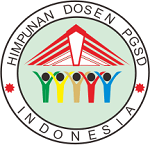| SINTA ACCREDITATION |
| ARTICLE TEMPLATE |
| SUPERVISED JOURNAL |
| RECOMMENDED TOOLS |
| JOURNAL VISITOR |
| IN COLABORATION WITH |

> Journal Collaboration Link <
| P-ISSN : 2355-1739 |
| E-ISSN : 2407-6295 |
| CONTACT US |
Instructions for (Candidates) Author of Handayani PGSD Journal FIP UNIMED:
All references referred to in the text of the article must be listed in the Reference List section. The reference list must contain references from primary sources (scientific journals, totaling at least 80% of the entire reference list) published in the last 5 (five) years. Each article contains at least 10-15 reference lists. Writing a reference system in the text of the article and writing a bibliography is RECOMMENDED to use the Mendeley reference management application program. The writing format used in the Education Journal is in accordance with the APA (American Psychological Association) format.
Reference list writing guide
Writing a reference list using the Mendeley reference management application. The writing format used in the Education Journal is in accordance with the APA (American Psychological Association) format.
Literature in the form of scientific journals:
Cate, Olle Ten. (2018). Assessment of Clinical Reasoning Using The CBCR Test. Innovation and Change in Professional Education, 15(7), 85-94
Literature in the form of book titles:
Faisal & Lova, S.M. (2018). Pembelajaran Tematik Di Sekolah Dasar. Medan: CV Harapan Cerdas.
Literature in the form of Seminar Proceedings:
Ananda, L.J., Simanihuruk, L., & Nasution, R.A.A. (2019). The Development of A Collage Book Media Based on A Scientific Approach to Thematic Learning in Elementary Schools. International Conference of Science Education on Industrial Revolution 4.0 (pp. 241- 248). Medan, Indonesia: Elementary School Teacher Education, Universitas Negeri Medan.
Literature in the form of a dissertation/thesis:
Winara. (2022). Pengaruh Jus Jambu Biji Merah dan Minuman Tempe, Aktivitas Submaksimal, dan Tingkat Kebugaran Terhadap Pemulihan Otot. Doctoral Thesis. Universitas Negeri Semarang.
Literature in the form of Website:
Microsoft Academic. (2016). Retrieved September 13, 2022, from Microsoft Academic Interact Website: https://www.microsoft.com/en-us/research/project/academic/
Literature in the form of Government Documents:
Pusat Penilaian Pendidikan Badan Penelitian dan Pengembangan Kementerian Pendidikan dan Kebudayaan. (2019). Panduan Penulisan Soal HOTS (Higher Order Thinking Skills). Jakarta: Pusat Penilaian Pendidikan.
Literature in the form of Government Documents issued by publishers and without institutions:
Peraturan Menteri Pendidikan dan Kebudayaan Republik Indonesia Nomor 3 Tahun 2020 Tentang Standar Nasional Pendidikan Tinggi. (2020). Jakarta: Kementerian Pendidikan dan Kebudayaan.
Tulisan/ berita dalam koran (tanpa nama penulis)
Kompas. 8 Desember, 2019. Krisis Iklim Memicu Gerakan Sosial, hlm 8.
Authors published with the Handayani PGSD FIP UNIMED Journal agree to the following terms:
| SINTA ACCREDITATION |
| ARTICLE TEMPLATE |
| SUPERVISED JOURNAL |
| RECOMMENDED TOOLS |
| JOURNAL VISITOR |
| IN COLABORATION WITH |

> Journal Collaboration Link <
| P-ISSN : 2355-1739 |
| E-ISSN : 2407-6295 |
| CONTACT US |
